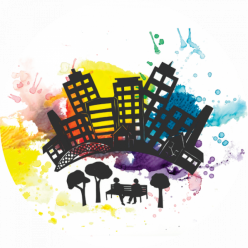The value of creating a fictional world
“The beauty of creating a fictional world is that we can, just for the purpose of the fictional world eliminate all these constraints that actually exist out there in the everyday world, which I think has the advantage of allowing us to focus in on, “what would we actually like it to be like?”
— Catherine Graham, TSDC Principal Investigator
In this concluding section of our 3-part storycircle blog series Catherine continues where she left off in her discussion of the distinction between documentation and meaning-making in the TSDC storycircles and performances.
C: In the storycircle some documentation will happen, and by documentation I mean sharing information about the mechanics of how different problems play out in the community. This is always an important part of telling a story. But what we’re really looking for in the storycircle is how things are meaningful to people, not necessarily what happened to them, or what they would like to have happen, but why is it meaningful to you that, for example, you would like to have a forever home? What does that mean to you, why did you choose to tell us about that?
I think a misconception many people have when we first talk about TSDC is that we’re going out into their community to talk to people about how they’re experiencing something like gentrification and we’re going to document that experience. But I think the reason that these performances are so moving to people is because they’re not just about documenting that this percentage of the population is at risk of losing their housing, and this is what kind of problems happen when the elevator doesn’t work, and people are living in fear of eviction, and that’s causing health problems… All that is in there, but I don’t think that’s why these performances are making people sit up and take notice. It’s because we’re showing how the people living in this situation attribute meaning to the situation they’re in, and to the situation they would hope to be in. I think it’s a combination of desire and meaning.
Another interesting thing that can come out of storycircles is a recognition that not everyone wants what you want. Sometimes I think even the misrecognition that can come out in the answers to “this is a story about” is valuable because it allows someone to say “umm?….” If someone says, “This is a person who is so generous and gives everything to her community,” someone else can say, through their response, “Well I don’t think that’s really what that story is about, and that’s not really what I want that story to be about.”
The beauty of creating a fictional world is that we can, just for the purpose of the fictional world, eliminate all these constraints that actually exist out there in the everyday world, which I think has the advantage of allowing us to focus in on, “what would we actually like it to be like?”… and maybe to recognize that we actually don’t agree, we don’t all want the same thing here. Working to create fictional worlds together, people quickly realize that the world is richer when we build it up from different points of view, different desires, and multiple complex reactions to what is going on….
That’s why it feels so important that, the very first time we get together in the storycircle, everybody gets heard and everybody gets told that what they said was meaningful, and yet, there is no authoritative meaning imposed. There is no moment of discussion about whether you got it or not, whatever you got is what needs to be gotten from your point of view. It’s one of the things I love about the idea of the circle, we’re all exactly where we should be, seeing exactly what we should see from that position.

